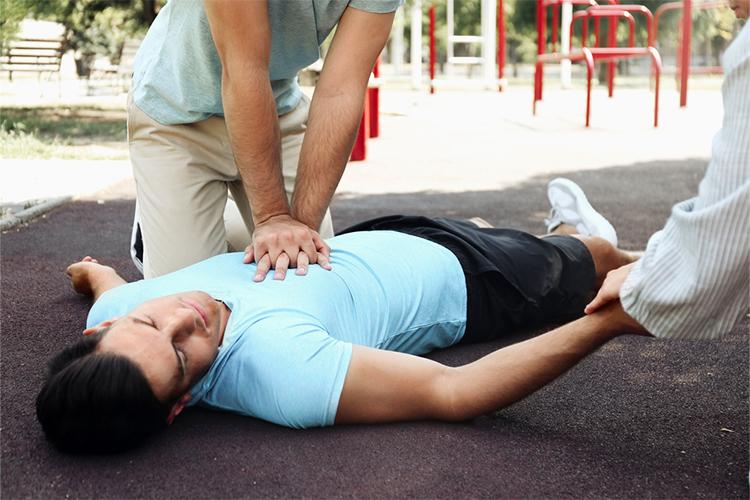A Guide to Perform CPR
Jan 04, 2024

Introduction: Emergencies can happen anytime and anywhere, and knowing how to respond to them can make all the difference. One of the most important skills that can help save lives in an emergency is CPR (Cardiopulmonary resuscitation). CPR is a technique that involves a series of procedures aimed at restoring the function of the heart and lungs in a person experiencing cardiac arrest or respiratory failure. In this blog, we will discuss the different types of CPR, the importance of CPR, the procedure, and the steps involved in performing CPR, as well as the survival rates of patients who receive CPR.
Types of CPR:
Performing CPR is a life-saving technique used to revive a person who has stopped breathing or whose heart has stopped beating. There are three types of CPR, and each type is specifically designed to address different age groups and situations. The first type is basic life support (BLS), which is the simplest and most commonly used type of CPR. BLS involves chest compressions and rescue breathing to revive a person who has stopped breathing or whose heart has stopped beating. It is typically used for adults who are not in a hospital setting.
The second type of CPR is advanced cardiovascular life support (ACLS), which is a more advanced technique used to treat cardiac arrest in adults. ACLS involves using more advanced equipment and techniques such as defibrillation and medication administration. This type of CPR is typically performed in a hospital setting by trained healthcare professionals such as doctors and nurses. The third type of CPR is pediatric advanced life support (PALS), which is a specialized technique used to treat children and infants who are experiencing respiratory or cardiac arrest. PALS involves using equipment and techniques that are specifically designed for children and infants, such as smaller-sized defibrillators and medication dosages.
Importance of CPR :
CPR is of utmost importance in cases where a person's heart has stopped beating or is beating irregularly. In such situations, time is of the essence, and performing CPR as soon as possible can greatly improve the chances of survival. CPR helps maintain blood flow and oxygen supply to vital organs such as the brain and heart, which can keep them from sustaining irreversible damage. By performing chest compressions and rescue breaths, you are essentially taking over the role of the heart and lungs and keeping the body functioning until advanced medical help arrives.
Moreover, CPR can increase the chances of successful defibrillation, which is a vital step in treating cardiac arrest. Defibrillation involves delivering an electric shock to the heart to restore normal heart rhythm. However, for defibrillation to be successful, the heart needs to have enough oxygen and nutrients to respond to the shock. CPR can help supply the heart with oxygen-rich blood, increasing the chances of successful defibrillation. Therefore, learning CPR is crucial for anyone who wants to be prepared to respond to emergencies and potentially save lives.
CPR Procedure: The procedure for performing CPR depends on the type of CPR being performed. In general, the first step in performing CPR is to assess the situation and call for emergency medical services (EMS). After calling EMS, the next step is to begin CPR immediately. For BLS, the procedure involves performing chest compressions and rescue breathing in a ratio of 30:2. For ACLS, additional interventions such as defibrillation and medication administration may be necessary. For PALS, the technique involves chest compressions, rescue breathing, and other specialized interventions specific to children and infants.
CPR Steps: The steps involved in performing CPR are as follows:
Step 1: Assess the situation and call for emergency medical services (EMS).
Step 2: Position the person on their back on a firm surface.
Step 3: Open the airway by tilting the head back and lifting the chin.
Step 4: Check for breathing by listening for sounds of breathing, feeling for breath on the person's mouth, or watching for chest movement meanwhile feel the central pulses in the groove between wind pipe and neck muscles for 5 to 10 sec.
Step 5: If there is no pulses and breathing, begin CPR immediately by performing chest compressions and rescue breathing in the appropriate ratio.
Step 6: Continue performing CPR until EMS arrives or until the person shows signs of life.
CPR Survival Rates:
The survival rates for patients who receive CPR depend on several factors, including the underlying cause of the cardiac or respiratory arrest, the time between the onset of the arrest and the initiation of CPR, and the quality of CPR performed. Studies have shown that the survival rates for patients who receive CPR can range from 2% to 15%. However, early initiation of CPR and high-quality CPR can significantly increase the chances of survival.
Conclusion: CPR is a life-saving technique that can help maintain blood flow and oxygen supply to vital organs in a person experiencing cardiac arrest or respiratory failure. It is essential to know the different types of CPR, the importance of CPR, the procedure, and the steps involved in performing CPR, as well as the survival rates of patients who receive CPR. By being prepared and knowing how to respond to an emergency, you can help save lives and make a significant difference in your community's safety.
Dr. Atish Garg
Consultant – Emergency
Paras Health, Gurugram









